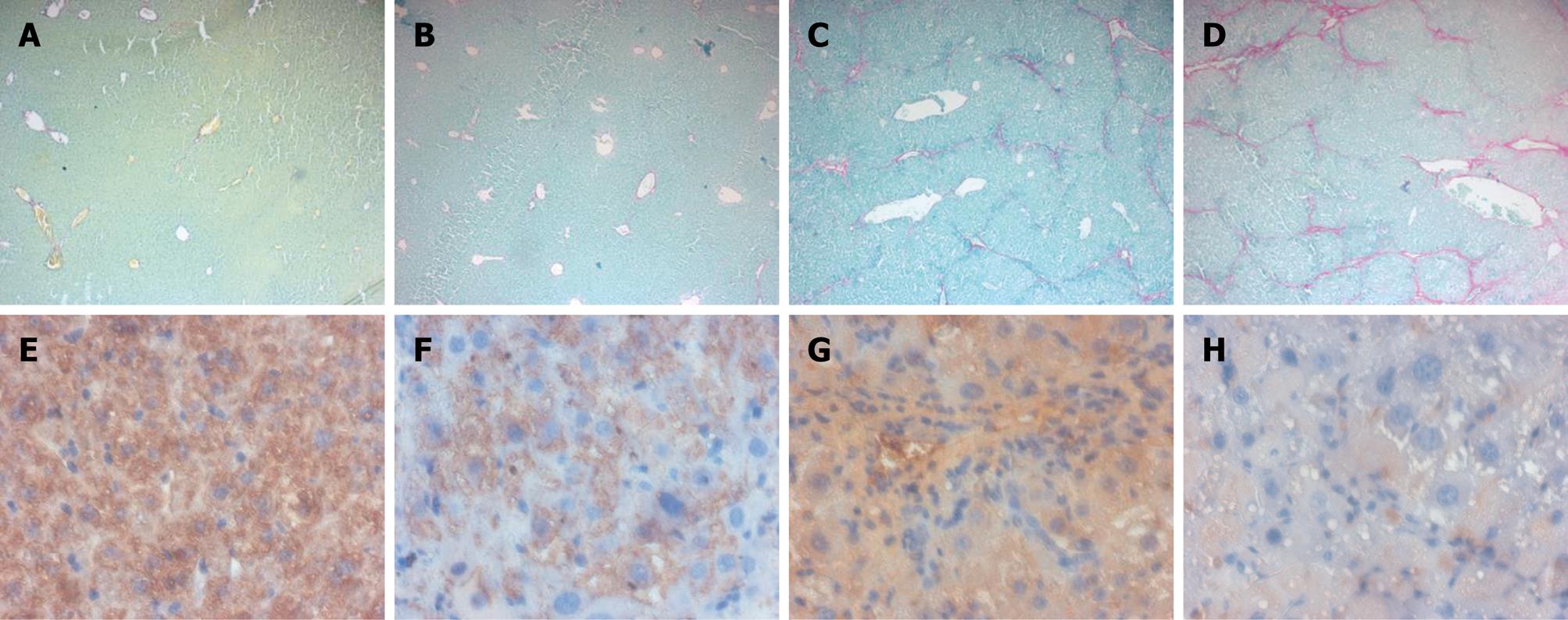Copyright
©2009 The WJG Press and Baishideng.
World J Gastroenterol. May 7, 2009; 15(17): 2097-2108
Published online May 7, 2009. doi: 10.3748/wjg.15.2097
Published online May 7, 2009. doi: 10.3748/wjg.15.2097
Figure 5 FXR loss of function sensitizes mice to CCl4-induced liver fibrosis.
A: Sirius red staining of liver section obtained from FXR +/+ mice; B: Sirius red staining of liver section obtained from FXR -/- mice; C: Sirius red staining of liver section obtained from FXR +/+ mice treated with CCl4; D: Sirius red staining of liver section obtained from FXR -/- mice treated with CCl4; E: Liver section stained with CSE monoclonal antibody obtained from FXR +/+ mice; F: Liver section stained with CSE monoclonal antibody obtained from FXR -/- mice; G: Liver section stained with CSE monoclonal antibody obtained from FXR +/+ mice treated with CCl4; H: Liver section stained with CSE monoclonal antibody obtained from FXR -/- mice treated with CCl4.
- Citation: Renga B, Mencarelli A, Migliorati M, Distrutti E, Fiorucci S. Bile-acid-activated farnesoid X receptor regulates hydrogen sulfide production and hepatic microcirculation. World J Gastroenterol 2009; 15(17): 2097-2108
- URL: https://www.wjgnet.com/1007-9327/full/v15/i17/2097.htm
- DOI: https://dx.doi.org/10.3748/wjg.15.2097









